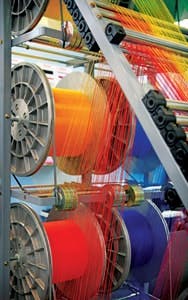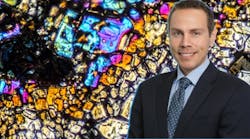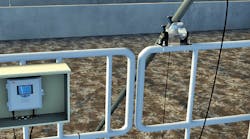The textile industry is water-intensive. Water is used for cleaning raw material and for the different steps in the textile dyeing process.
Due to the effects of water scarcity and stricter environmental regulations, the cost of freshwater utilization has increased worldwide. In addition, the textile industry faces pressure from government regulators to move toward sustainability by reducing water consumption, while internal pressures to maintain or increase profit margins for stakeholders also exist.
Companies in this industry utilize varying amounts of water depending on specific processes operating at the mills, such as the fabric used, equipment used and the prevailing management philosophy concerning water usage. Wool and cotton fabric materials processing requires a higher consumption of water than other subcategories, such as polyester or nylon.
The vast amounts of wastewater generated by textile processing facilities create several challenges. These issues include treatment chemicals, wastewater treatment operating costs or surcharges, sludge disposal costs and power consumption.
These issues make the challenge of allocating and effectively managing water—with a focus on sustainability and energy efficiency—a critical component to textile processing operations.
Meeting these challenges with sustainable treatment solutions prevents water pollution from entering into local watersheds, thereby protecting public health and the surrounding ecosystems.
Typical Textile Wastewater Composition
- Typically, wastewater effluent from textile processing operations has the following characteristics:
- Nonbiodegradable organics/inorganics such as metals, phenols, color, pesticides and phosphates and certain surfactants;
- High concentration of total suspended solids (TSS);
- Biological oxygen demand (BOD) and chemical oxygen demand (COD); and
- Elevated levels of total dissolved solids (TDS).
The characteristics listed above and other potential contaminants can present problems for facilities that use conventional primary treatment methods, including biological reactors, for wastewater treatment.
These contaminants also present challenges to municipal wastewater treatment facilities, as these facilities are typically not equipped to treat these contaminants in an efficient way.
A New Paradigm to Optimize Costs
Utilizing a new approach through the use of advanced primary and secondary water treatment solutions is necessary to meet the challenges faced by the textile industry now and in the future.
Electrocoagulation is one of the emerging water treatment solutions capable of handling the varying wastewater characteristics of textile industry effluent. This technology employs the advantages and functions of conventional flotation, coagulation and electrochemistry in water and wastewater treatment to optimize contaminant removal in an environmentally sustainable and cost-efficient way.
This solution provides companies with new and existing wastewater treatment systems the opportunity to optimize their current treatment process by adding dependability, reducing operating, maintenance and sludge disposal costs, and mitigating environmental concerns relating to toxic nonbiodegradable solids sludge disposal.
Electrocoagulation water treatment solutions can be helpful in several aspects of the textile wastewater treatment process. These include primary pretreatment to remove or reduce nonbiodegradable, toxic compounds and color prior to a biological process or as a polishing pretreatment for specific contaminants, such as colloidal organics, minerals, or microbiological contaminants prior to ultrafiltration (UF) or reverse osmosis desalination (RO) systems.
A Sustainable Goal
Textile wastewater treatment and reuse is a promising means of conserving and augmenting available water resources and reducing harmful pollution discharge into the environment. This is especially felt in water-stressed countries across Africa, Asia and South America, where the textile industry is of vital importance to local economies.
As companies in this industry move toward pursuing sustainability goals to reduce operational costs and complying with increasingly stricter regulations, it is becoming apparent that water reuse is one of the key components of these initiatives.
Municipal wastewater disposal surcharge costs for textile companies are based on the levels of constituent contaminants discharged. Reusing this water can provide a significant return on investment for textile producers not only through the removal of these wastewater surcharges, but also through the reduction of the cost to purchase freshwater.
Electrocoagulation wastewater treatment solutions from Genesis Water Technologies (GWT) can eliminate or reduce chemical costs and reduce sludge disposal costs and consumables expenses for secondary and/or tertiary treatment equipment.
Future Trends
- Water reuse and sustainability will continue to be important goals for environmental pollution prevention/reduction practices in the textile industry.
- The textile industry will continue to choose and utilize water treatment solutions not only to reduce its operating costs, but also to reduce its water footprint and decrease the ecological impact from its wastewater discharge and solids sludge generation on the surrounding ecosystem.
- Wastewater treatment process optimization will continue to be a focal point for textile industry companies as the costs of wastewater disposal and freshwater consumption continue to escalate due water scarcity issues.
With an increasingly growing and progressively affluent global population, demands on the world’s global water resources will necessitate higher water costs and stricter regulations. This is propelling textile companies and municipalities alike to reevaluate their practices and push toward a more sustainable future.
Optimizing more efficient methods, coupled with advanced treatment solutions to treat and reuse wastewater and process water, will remain an important consideration for textile manufacturing companies across the world in the future.


